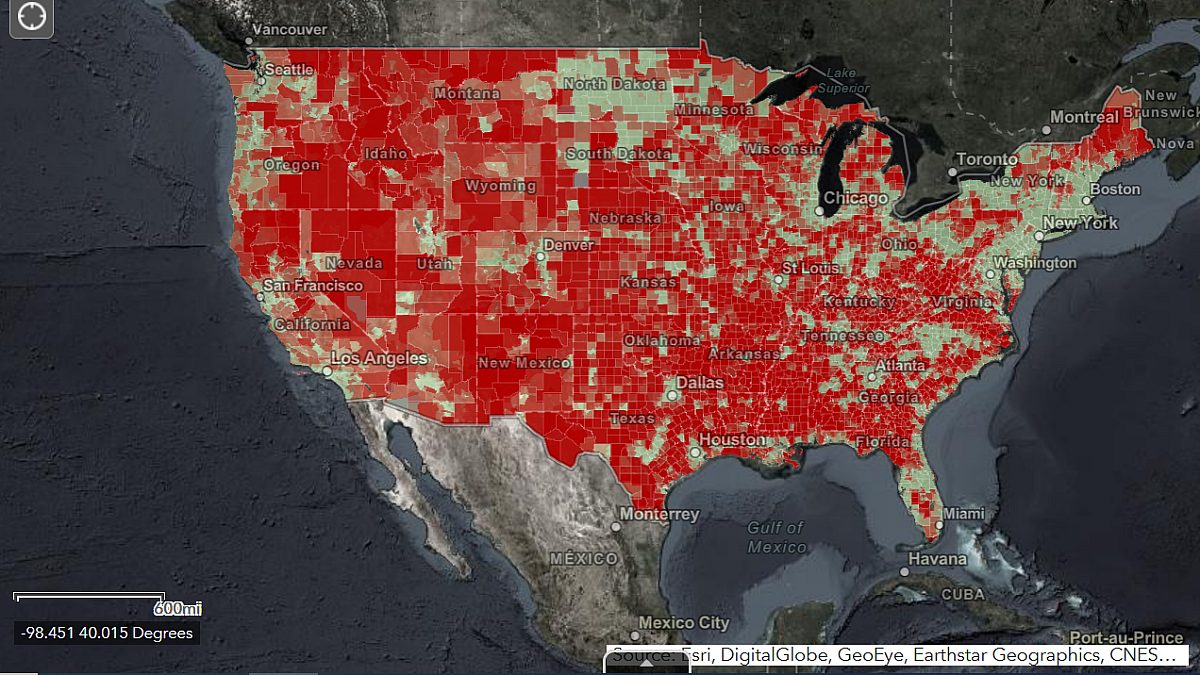First-of-its-Kind Map Pulls From Various Data Sources to Highlight Broadband Needs
TOPICS
Rural BroadbandErin Anthony
Director, Communications

photo credit: National Telecommunications and Information Administration
Erin Anthony
Director, Communications
A new digital map from the Commerce Department’s National Telecommunications and Information Administration provides more detail about broadband needs across the country than any other publicly available resource. Tapping into data aggregated at the county, census tract, and census block level from the U.S. Census Bureau, the Federal Communications Commission, M-Lab, Ookla and Microsoft, the map shows the many parts of the country reporting connection speeds that fall below the FCC’s current benchmark for fixed broadband service of 25 Mbps download, 3 Mbps upload.
Farmers, ranchers and others who live in rural communities struggle everyday with poor connection speeds, which slow down their work on the business end of the farm, school work, and their ability to download and share important documents – and so much more.
“A reliable and speedy broadband connection is also critical to farmers’ use of precision agriculture to farm as sustainably and efficiently as possible. Without high-speed internet, farmers cannot collect key data or analyze it to determine the exact amount of fertilizer to apply, how much water their crops need or the precise amount of herbicides or pesticides they should use,” explained Ryan Yates, managing director of public policy at the American Farm Bureau Federation.
NTIA’s new map can help officials determine where to focus government funding and public-private partnership efforts to enhance broadband.
“There are resources available to boost broadband access in rural America, but it’s limited, making it extremely important to target the areas that need it the most,” Yates said.
Farm Bureau is backing two bills introduced this spring that would help with rural broadband funding.
The Eliminating Barriers to Rural Internet Development Grant Eligibility (EBRIDGE) Act (S. 1695, H.R. 3193) seeks to ensure local communities can partner with the private sector in carrying out broadband projects and gives communities more flexibility in complying with their funding match requirements.
The Broadband for Rural America Act (H.R. 3369) would provide more than $7 billion in authorizations for USDA broadband connectivity programs.
Trending Topics
VIEW ALL